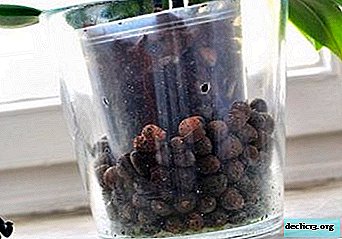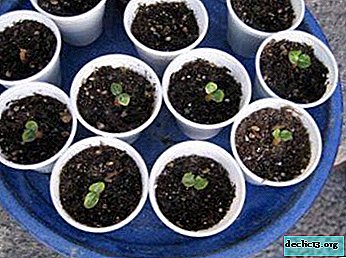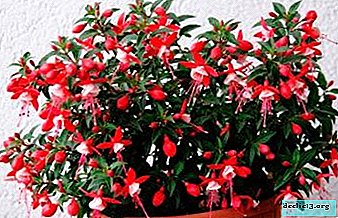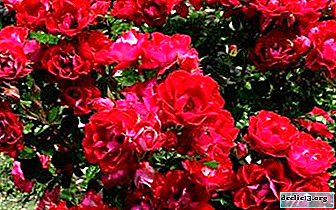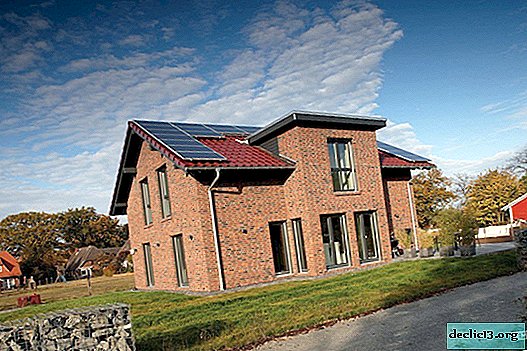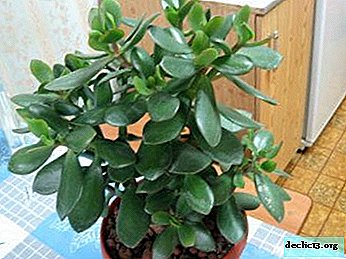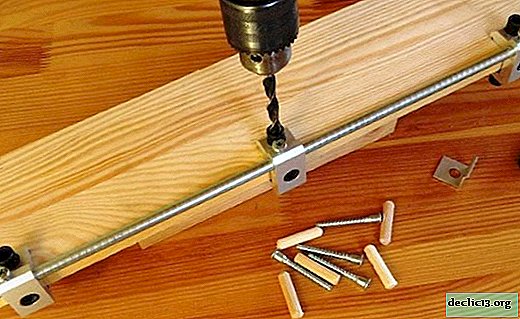Methods of planting radish seeds. How to grow seedlings in the garden, in the greenhouse and at home?
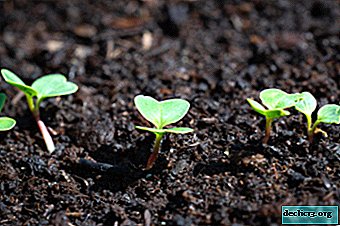 Radish is the first vegetable crop that appears on the beds in early spring. In addition to a pleasant, refreshing taste, this root crop is rich in ascorbic acid and useful trace elements.
Radish is the first vegetable crop that appears on the beds in early spring. In addition to a pleasant, refreshing taste, this root crop is rich in ascorbic acid and useful trace elements.
After a long winter, we look forward to ripening a crispy vegetable to enjoy the juicy pulp and make up for the lack of vitamins in the body.
In the article, we will talk about how to plant radishes correctly and how to make it grow faster.
Which radish is better to choose?
It would seem, radish is the most unpretentious culture that grows in our beds. But for the correct formation of root crops, you need to choose varieties suitable for sowing in a certain period of time.
Radish has a short growing season: under favorable conditions, depending on the selected variety, the first fruits appear 3-4 weeks after planting. In order to correctly determine the choice of seeds, you need to know the ripening time and determine the time of planting.

- Radishes can be ultra-early, which ripens within 20 days after sowing seeds into the ground. These include the following varieties: 18 days, Firstborn F1, Child F1, Ultra-early red.
- Early varieties ripen approximately 25-30 days after planting. Heat and French breakfast are the favorite varieties of many summer residents, which have bright raspberry fruits, reaching a weight of up to 20 grams.
- Mid-season - with a ripening period of 30-35 days, combine such properties as excellent taste and high yield. These include varieties Rebel, Duro, Ilka, Alba.
- Late-ripening varieties are disease resistant and suitable for long-term storage. This is the Red Giant, Zlata, Icicle.
The difference in sowing in open ground, in the greenhouse and at home
You can grow radishes in any conditions: in open beds, in closed greenhouses and at home on the windowsill. Planting in the greenhouse will provide an earlier harvest of this vegetable crop from early spring to late autumn. Radish grown in open ground is distinguished by impeccable taste and in favorable weather conditions will yield a rich harvest.
The rules for growing radishes are similar in both cases, the difference is that, due to the limited space in the greenhouse, radish seeds are planted with other vegetable crops, and in the open ground for radishes you can take a whole garden.For those who are interested in whether it is possible to sow a vegetable under the winter, we will answer that at home radishes can be planted at least year-round. But there is one problem, root crops can be small due to lack of lighting. To avoid this, you need to provide the plant with comfortable conditions:
- additional illumination with a short daylight;
- soil heating in cold weather;
- regular watering.
Unlike other vegetable crops, radishes do not like introducing fresh manure into the ground.
How to plant: schemes and instructions
 Basically, radish does not have special soil requirements, but prefers light, well-drained soils rich in organic matter. For planting, choose a well-lit place with no drafts.
Basically, radish does not have special soil requirements, but prefers light, well-drained soils rich in organic matter. For planting, choose a well-lit place with no drafts.
Before planting radish seeds, you need to prepare a site:
- dig up;
- apply fertilizer;
- level the soil with a rake.
Planting radish seeds is carried out on low beds for better moisture retention. Radishes can be sown in small batches to constantly receive a new crop of vegetables.
It is important to know at what temperature to plant a crop in open soil: you can safely sow a vegetable into the soil only after the snow has melted and the earth has warmed up enough, radish seeds will sprout at temperatures above + 10 ° C. Usually this is mid-April and early May.
Seeds for planting can be purchased in specialized stores or prepared independently. In the latter case, it is necessary to choose the varieties - hybrids are not able to give offspring in the next generation.
For this, the plant of the desired variety after the formation of the root crop is left in the garden. After a while, a peduncle will appear on which seeds will form. When the pods have dried and ripened, they need to be washed with your hands and the seeds extracted. In this way, we get a sufficient amount of planting material.
Attention! Do not use seeds from those plants that bloomed without root formation for harvesting.For planting, special equipment is not required - a small shovel is enough to make grooves.
Given that the radish seeds are quite small, the sowing density may be uneven, after the first sprouts, the extra shoots can be removed. But experience shows that it’s better to try to sow one seed so as not to thin out, since this procedure can damage the roots of the radish, which will slow down the development of the plant and the formation of arrows.
 Radish is very fond of moisture, so further care is regular watering, thinning, loosening and weeding. In dry weather, you need to water the radish more often: in the morning and in the evening, then the fruits will be juicy and crispy. When there is insufficient moisture, the root crop either does not form at all, or it turns out to be fibrous or hollow. With excessive watering, the radish may crack and acquire a watery taste.
Radish is very fond of moisture, so further care is regular watering, thinning, loosening and weeding. In dry weather, you need to water the radish more often: in the morning and in the evening, then the fruits will be juicy and crispy. When there is insufficient moisture, the root crop either does not form at all, or it turns out to be fibrous or hollow. With excessive watering, the radish may crack and acquire a watery taste.
To save space in the garden, you can plant a radish on the edges of the beds with carrots or onions, or in a greenhouse before planting tomatoes.
Now you know where and when it is better to plant your favorite radish by many, then we will tell you how to do it right. The following methods are used for planting radishes.
In egg cartridges
After buying the eggs, there are cardboard cassettes that can be used for planting radishes. To do this, you need:
- Treat the cassettes with alcohol or other disinfectants. You can warm in the oven at low temperature for 15-20 minutes.
- Cut the tops with a sharp knife to form through holes. Then turn it over.
- We put one seed in the cells.
- Sprinkle on top of the ground and water.
Next, you can see how the egg cassette template looks in the photo.

We suggest watching a video on how to plant radishes and egg cartridges:
In boxes
Another way that you can plant seeds is in boxes. For growing radishes, wooden crates with a depth of at least 15 cm are suitable. We fill the prepared container with nutritious soil, make grooves with an interval of 8-10 cm and place the prepared seeds there.
On toilet paper
In this way, you can plant any small seeds. To do this, we prepare a paste from flour and water, it will ensure the fixation of seeds on the tape.
- Using the prepared mixture, we fix the radish seeds on strips of paper with an interval of 2 cm from each other. After drying, the seeds stick firmly to the paper.
- When planting, we simply place the ribbon with seeds on the prepared beds.
- We water, sprinkle the tape with soil and wait for shoots.
In the open ground in the garden
Seeds are sown in rows at a distance of 8-10 cm, the minimum distance between plants should be 2-3 cm. This is how deep the seeds should be in the open ground - 1-2 cm, and it makes no sense to plant deeper - the radish seed may not germinate. There is another planting scheme: the seeds are laid out piece by piece after 5 cm in a checkerboard pattern. Varieties with large root crops are planted with a large interval.
How to sow to quickly ascend?
 The most popular option for accelerating the germination of planting material is pre-soaking. Seed treatment with growth stimulants is also practiced, this method is completely safe. Thanks to growth stimulants, the appearance of the first seedlings of radishes appears much earlier than with the usual planting of seeds in the ground.
The most popular option for accelerating the germination of planting material is pre-soaking. Seed treatment with growth stimulants is also practiced, this method is completely safe. Thanks to growth stimulants, the appearance of the first seedlings of radishes appears much earlier than with the usual planting of seeds in the ground.
To improve seed germination, you must first sow the grooves with soil.
Possible problems and difficulties
Sowing radishes in hot weather is not recommended, since this crop does not tolerate the effects of high temperatures.Radishes can be affected by diseases that affect cruciferous plants:
- Powdery mildew can affect radish plantings in greenhouses due to a lack of fresh air or an excess of moisture.
- Black spotting can appear on the pods and seeds of the plant at high humidity, as a result, germination rates of these seeds are worsened.
- If the acidity of the soil is increased on the garden bed, a keel may appear. This is a virus that infects the roots of a plant. It is better to remove the infected root crops and it is not worth planting radishes in this place in the near future.
- Garden fleas can appear on the first shoots. They appear in dry weather in large quantities. Regular watering and the use of wood ash is the main prevention of the appearance of this annoying pest.
First plant care
- After the appearance of the first shoots, it is necessary to maintain optimal humidity on the bed.
- Do not forget to remove weeds in time, which can obscure the vegetable plant and interfere with its full development.
- Loosening the soil will ensure the flow of oxygen to the roots and ventilation of the soil.
You can get a full harvest of radishes all season even in small areas, for this you need to adhere to the basic rules of agricultural technology and know the secrets of planting this crispy root crop.

